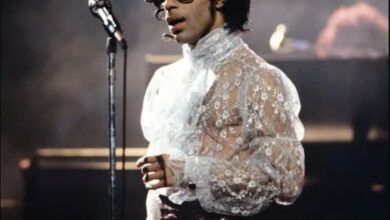After 9 Years, I Finally Uncovered Hidden Details in the Fifty Shades of Grey Films That Will Change How You See the Story! Dive Into the Intricate Layers with Me!
OPINION: This article may contain commentary which reflects the author's opinion.
It’s been nearly a decade since Fifty Shades of Grey made its cinematic debut, captivating audiences with its controversial love story, steamy chemistry, and the complex dynamic between Anastasia Steele and Christian Grey. But after multiple viewings and nearly nine years to let it all sink in, I’ve uncovered some fascinating hidden details that completely shifted my perception of the story—and they just might do the same for you.
Let’s take a deep dive into the intricate layers of this infamous saga!
1. The Symbolism of Christian’s Grey-Tie
Christian Grey’s signature grey tie isn’t just a fashionable accessory or a tool for playful restraint—it’s symbolic. As the film progresses, it becomes clear that the tie represents the control Christian seeks, not just over Anastasia but in every aspect of his life. The grey color, rather than black or white, symbolizes the moral ambiguity of Christian’s actions and the inner conflict between dominance and his desire for connection. It’s a subtle reminder that Christian’s world is not as black-and-white as he’d like to believe, but rather, it’s muddled with shades of grey.
2. Ana’s Wardrobe Transformation Mirrors Her Emotional Journey
Ana’s transformation throughout the films isn’t just emotional; it’s also carefully mirrored through her wardrobe. In the beginning, she wears softer, muted colors, reflecting her innocence and inexperience. As she begins to assert her boundaries and gain confidence in her relationship with Christian, her clothing choices evolve. Notice the shift to bolder colors and structured designs by the third film (Fifty Shades Freed)—they reflect her newfound strength and sense of control in a world where Christian once dominated.
3. The Red Room as a Metaphor for Vulnerability
While the Red Room may be a place associated with BDSM in the films, it’s also a profound metaphor for Christian’s deepest vulnerabilities. Far from a simple physical space, the Red Room serves as the one place where Christian lets his guard down—albeit on his own terms. It’s where he confronts his past traumas, his need for control, and his fears of intimacy. By the time we reach Fifty Shades Freed, the Red Room no longer represents power or dominance, but trust and mutual consent, marking a huge shift in their relationship.
4. The Artwork in Christian’s Apartment Holds Clues
There’s more to Christian’s extravagant apartment than meets the eye, and the artwork throughout the space isn’t chosen by accident. The stark, minimalist pieces that initially adorn the walls reflect his sterile, control-driven life before Ana. As their relationship progresses, softer, more personal art pieces begin to appear in the background of scenes. Pay close attention to the change in aesthetics in Fifty Shades Darker—it’s a subtle yet significant nod to how Ana’s presence has started to warm the once cold environment, just as she starts to thaw Christian’s emotional barriers.
5. The Role of Classical Music: More Than Just a Soundtrack
Christian’s love for classical music is a recurring theme throughout the films, but it serves a deeper purpose beyond setting a mood. In many scenes, classical compositions are used to juxtapose the tension or emotional turmoil unfolding on screen. For example, pieces like Spem in alium during moments of intense intimacy provide a layer of complexity—suggesting that for Christian, these encounters are not just physical, but spiritual and deeply emotional. The use of this genre also contrasts with his hardened persona, revealing his softer, more vulnerable side.
6. Ana’s Glasses Are a Symbol of Her Self-Perception
Ana’s glasses in the opening scenes of Fifty Shades of Grey are not just a part of her bookish character design—they represent her perception of herself as unremarkable and overlooked. Once she meets Christian and steps into a new world, the glasses disappear. It’s not just a sign that she’s ‘grown up’ or ‘transformed’ physically—it’s indicative of how she’s starting to see herself differently, with more confidence and agency.
7. The Use of Mirrors: Reflecting Duality
Mirrors appear repeatedly throughout the trilogy, often in moments where characters are grappling with their dual nature. Christian, in particular, is frequently shown looking into mirrors, especially during moments of self-reflection. This recurring visual theme emphasizes his internal battle—who he is versus who he wishes to be, or who he presents to the world versus what lies beneath. Ana is also framed in mirrors during key moments, underscoring her own transformation and the ways in which she is reflecting on her newfound strength and identity.
8. The Subtle Role Reversals
Throughout the trilogy, the power dynamics between Christian and Ana are ever-shifting. While Christian is often seen as the dominant figure, there are crucial moments where Ana subtly assumes control. Look closely at their interactions during negotiations about their relationship’s boundaries—especially in Fifty Shades Darker. Ana’s willingness to walk away, challenge Christian’s terms, and assert her desires signals her growing dominance in their relationship, redefining what power and submission really mean in the context of their evolving dynamic.
9. The Helicopter Crash: More Than Just a Plot Twist
In Fifty Shades Darker, Christian’s helicopter crash serves as a pivotal turning point. It’s not just an external crisis, but a metaphor for Christian’s internal breakdown. The crash forces him to confront his mortality and vulnerability, driving him to realize that his life is no longer just his own. Ana’s emotional reaction to the incident, and Christian’s subsequent proposal, highlight a major shift in their relationship—from one rooted in control to one centered on partnership and love.
10. Christian’s Childhood Bedroom: A Glimpse into His Psyche
Christian’s childhood bedroom in Fifty Shades Freed gives us a rare, unfiltered look into his past. The room, which remains untouched, is a stark contrast to his pristine adult world. It serves as a reminder of the trauma that shaped him, but also the innocence that was stolen from him. The film subtly invites the audience to understand Christian’s behavior not as purely domineering, but as the result of a deeply wounded psyche that he’s spent a lifetime trying to protect.
As I reflect on these hidden details, it’s clear that Fifty Shades of Grey is much more than a tale of romance and seduction. It’s a nuanced exploration of power, vulnerability, and the complexities of human relationships. After nine years of dissecting the films, I’ve come to appreciate the intricate layers woven into every scene, character, and symbol—details that completely reshape how we see Christian, Ana, and their story.



